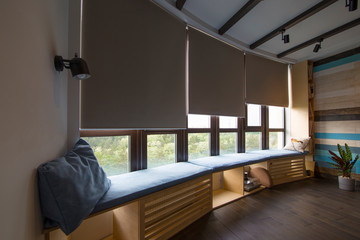
Your furnace plays a vital role in keeping your home comfortable and warm. However, it can be frustrating when a problem causes your system to malfunction.
Fortunately, many common furnace problems can be corrected by a professional. Here are a few signs that your furnace needs repair. a). No heat: This could indicate that the thermostat or gas valve are not working properly. For more information, check out Mr. Heat Furnace Repair Orillia.
Thermostat Issues
If you’re noticing that your home isn’t getting warm enough, it could be time for a furnace repair. However, before you call a professional, try some do-it-yourself tips to see if the problem can be solved at home.
Often, simply changing the thermostat setting will give you the warm air your home needs. Make sure it’s set to “Heat” and that the fan is set to “On.”
Another simple fix for no hot air is to change your filter. If it’s been a long time since you last changed the filter, the old one may be restricting airflow and causing your furnace to work harder.
Also, check that nothing is blocking the intake or exhaust ports. If there is a blockage, it’ll prevent the flow of gas from getting to your furnace. This can lead to overheating and a number of other problems.
Checking your breaker switch may also help. If someone flipped it off by mistake (it looks like a light switch) then it’s time to reset it. This is a safety feature that protects your home from dangerous power surges.
If your breaker switch is constantly tripping, there’s likely an issue with the gas supply line or electrical wiring. A qualified technician can diagnose the problem and determine if it’s something you can fix yourself or if a major repair is needed.
Other furnace issues that require a professional include burning smells, high energy bills and continuous running. These are typically indicative of larger problems and need to be addressed as soon as possible. Whether you can do a minor repair yourself or aren’t comfortable with working with electricity, it’s always better to call a professional than wait until a bigger problem arises. You’ll not only get your home back to a comfortable temperature quickly, but you’ll save money on your high energy bills as well. In the end, a little bit of maintenance can go a long way to keeping your heating system running efficiently for years to come. Check out a furnace repair specialist in your area by doing an online search or asking friends and family for recommendations.
Burning Smells
One of the most common furnace problems is the smell of burning. This may seem alarming, but it’s nothing to panic over. It’s normal for dust to build up on and inside your furnace and burn off as it warms up. This typically happens at the beginning of the heating season, and it can also happen if the air filter is dirty and needs to be replaced.
If you notice a burning smell that lasts for more than an hour, it’s time to call in the professionals for a check-up. It could be a serious problem that requires immediate attention, such as an electrical fire or frayed wires, but it may also be a warning that carbon monoxide is leaking from your system into your home.
Another possible culprit for the burning odor is a clogged blower or fan motor. If you suspect this is the case, it’s a good idea to replace your air filter, and to look into getting an annual maintenance appointment for your furnace. These appointments are vital for keeping your furnace running properly, extending its lifespan, and saving you on expensive repairs in the future.
Other odors that need to be taken seriously include anything smelling like oil or metallic. A metallic scent may indicate that something is overheating, while the oily odor can mean that there’s an issue with the heat exchanger. This part is responsible for separating the combustion process from the ductwork that distributes the heat throughout your home, and it can be compromised by cracks or other issues that can release dangerous gases into your home.
Other potential causes of these odors are a dirty gas burner, an improperly lit pilot light, or a loose gas line. These issues are usually very easy to diagnose and can be fixed on a routine maintenance visit by a qualified professional. Be sure to choose a professional that has physical locations near you, so you can be certain they are licensed and insured. This will protect you from scams and ensure they can address your concerns promptly.
High Energy Bills
A furnace that is not well-maintained will become less efficient over time, requiring it to work harder and consume more energy in order to deliver the same amount of heating. This causes high energy bills and increases the risk of needing major repairs or even a system replacement, both of which can be expensive.
In addition to lowering your energy costs, regular furnace maintenance can also extend the lifespan of the unit. This is because professional cleaning, air filter changes, and other tasks can help prevent the need for repairs by minimizing the wear and tear on the furnace’s various parts.
For example, a dirty or worn out air filter can often cause the furnace to short-cycle. If you are experiencing this problem, try replacing the air filter to see if it fixes the issue. If not, it’s likely a sign that the blower motor or belt needs to be replaced.
Another common problem caused by a furnace that is not being properly maintained is a constant running sound. If you hear a clunking or scraping noise, it’s likely a sign that something is wrong with the blower bearings or that the furnace’s run capacitor has burnt out. If this is the case, you’ll need to call a repair service right away.
Finally, it’s important to note that a high-quality repair company will offer fair and competitive prices. If you feel that a technician is offering a quote that is significantly lower or more than the average range, it’s a good idea to get a second opinion from another repair company. This can help ensure that you’re getting the best possible price for your furnace repair.
Although it’s impossible to avoid all HVAC problems, routine furnace maintenance can help reduce the risk of costly breakdowns and repairs. By having your furnace inspected and cleaned by a local heating professional, you can rest assured that your system will operate efficiently and effectively for years to come. For more information about scheduling furnace maintenance, click the button below. This will take you to our guide on finding trusted, local HVAC technicians.
Continuous Running
If your furnace runs continuously, it may be time for a service call. This problem can be caused by a variety of things. Some are easy to fix on your own, such as a dirty air filter or a thermostat setting. Others require professional help, such as a faulty blower motor or a fan that is not turning off.
Start by checking the blower setting on your thermostat. Make sure that it is set to “auto” rather than “on.” This will allow the fan to run only when the system is in heating mode. It will also save energy by not running constantly.
A few other quick fixes for a running furnace include replacing batteries on battery-powered thermostats and visually inspecting the wiring connecting to the furnace for damage or corrosion. If you notice that the wires are loose or cracked, this could cause problems with communication between the thermostat and the furnace.
Dirty or clogged air filters can restrict airflow and force the system to work harder. Regularly replacing or cleaning the air filter will help with this issue.
If you hear a scraping noise when the system is running, this is a sign of damage to the blower bearings and should be repaired as soon as possible. These are delicate parts that can easily wear out or break, especially if the system is overworked.
Other noises from the furnace that should be fixed right away include pinging sounds, which can be a sign of thermal expansion or ductwork issues. These can be fixed with some minor repairs or by sealing and insulating your home.
Other furnace problems that require immediate attention include a faulty circuit board or electrical wiring, which cannot be fixed by yourself and should always be handled by a qualified professional. Contact an experienced HVAC technician as soon as possible to avoid further damage to your system and expensive repair bills. A professional will be able to diagnose the problem and provide the best solution for your home. You can also use our online form to request a service appointment.



